Biosafety Disease

What role does public health play in the implementation of biosafety policies ?
Public health is crucial for implementing biosafety policies, which aim to contain and manage biological agents that may pose a risk to human health, animal health, or the environment. Public health professionals play key roles in surveillance and disease detection, risk assessment and management, laboratory biosafety, vaccination programs, public education and awareness, policy development and implementation, emergency response, and international collaboration. By monitoring disease trends, assessing risks, maintaining laboratory safety, promoting vaccination, educating the public, developing policies, responding to emergencies, and collaborating internationally, public health professionals help protect individuals and communities from biological hazards.

What are the potential consequences of not having adequate biosafety policies in place ?
Biosafety policies are crucial for handling and containing biological materials safely. Inadequate biosafety measures can lead to direct and indirect exposure to pathogens, spread of disease, environmental contamination, legal and ethical issues, and economic impacts. It is vital for institutions and researchers to prioritize biosafety measures to protect human health, the environment, and society.

What are the different levels of biosafety containment and when should they be used ?
Biosafety containment levels are measures taken to isolate hazardous biological agents in labs and research facilities. These range from 1 (low risk) to 4 (high risk), with each level indicating the severity of the risk associated with the agent and the corresponding safety measures required to handle it. Examples include most microorganisms used in teaching labs (BSL-1), human pathogens like Salmonella (BSL-2), Mycobacterium tuberculosis (BSL-3), and Ebola virus (BSL-4). The appropriate biosafety containment level should be determined based on a risk assessment of the biological agent being handled, taking into account factors such as pathogenicity, mode of transmission, availability of effective treatments or vaccines, and potential impact on public health.

How do biosafety policies evolve in response to emerging infectious diseases and pandemics ?
Biosafety policies are evolving in response to emerging infectious diseases and pandemics. The evolution is driven by scientific advancements, global health initiatives, and lessons from past outbreaks. Key factors driving this evolution include: - Scientific advancements such as research and development and genomic sequencing. - Global health initiatives like international collaboration and surveillance systems. - Lessons learned from past outbreaks, leading to review and revision of policies and the adoption of best practices. Examples of evolved biosafety policies include: - Laboratory biosafety with clear classification systems (BSL) and standard operating procedures (SOPs). - Public health measures such as infection prevention and control (IPC) and vaccination programs. - Travel restrictions and quarantine measures like entry screening and quarantine regulations. - International regulations and agreements, including the Biological Weapons Convention (BWC) and the Global Health Security Agenda (GHSA). The continuous evolution of biosafety policies is crucial for managing risks associated with biological agents and protecting public health.

How do biosafety policies differ across countries and regions ?
Biosafety policies are crucial for protecting public health and the environment from potential risks associated with biotechnology. These policies vary significantly across countries and regions due to differences in regulatory frameworks, cultural values, economic resources, and technological advancements. The United States has a well-established regulatory framework for biosafety, while the European Union has a strict regulatory framework. In Asia, China and India have relatively new biosafety laws. Cultural values also play a significant role in shaping biosafety policies across countries and regions. Economic resources can impact the implementation and enforcement of biosafety policies, and technological advancements can introduce new challenges and opportunities.

What are the key principles of biosafety management ?
Biosafety management is a set of practices and procedures designed to minimize the potential risks associated with handling biological materials in research, clinical, and industrial settings. The key principles of biosafety management include risk assessment, facility design and engineering controls, personal protective equipment (PPE), standard microbiological practices (SMP), training and education, and incident response plans. Risk assessment involves identifying and evaluating potential hazards associated with working with biological materials, including assessing the risk of exposure to pathogens, toxins, and other harmful substances. Proper facility design and engineering controls are essential for effective biosafety management, including designing laboratory spaces that minimize the risk of exposure to hazardous materials and implementing appropriate ventilation systems. Wearing appropriate personal protective equipment (PPE) is crucial for protecting workers from exposure to hazardous materials. Standard microbiological practices (SMP) are essential for maintaining a safe working environment when handling biological materials. Training and education are critical components of biosafety management, and all personnel who work with biological materials must receive appropriate training on biosafety practices. Having an incident response plan in place is essential for managing accidents or spills involving hazardous materials.

How can we ensure biosafety in laboratories and research facilities ?
Ensuring Biosafety in Laboratories and Research Facilities: Biosafety is a critical aspect of any laboratory or research facility that deals with potentially hazardous biological materials. It involves implementing measures to prevent the exposure of personnel, the public, and the environment to these materials. Here are some ways to ensure biosafety in laboratories and research facilities: 1\. Establish clear policies and procedures, including creating a biosafety manual, providing training and education, and developing an emergency response plan. 2\. Maintain appropriate laboratory design and equipment, such as using physical barriers, ventilation systems, and decontamination areas. 3\. Practice good laboratory techniques, including using personal protective equipment (PPE), aseptic techniques, and proper waste management. 4\. Conduct risk assessments and implement controls, such as identifying potential hazards, evaluating the likelihood and severity of each identified hazard, and implementing appropriate administrative, engineering, and work practice controls. 5\. Monitor and review biosafety practices regularly, including conducting regular audits, encouraging feedback mechanisms, and continuously improving policies and procedures based on new information, technologies, or changes in the work environment.

How do biosafety policies impact the research and development of new drugs and vaccines ?
Biosafety policies play a crucial role in drug and vaccine development by promoting safety, protecting public health, preserving the environment, and fostering scientific progress. These policies provide guidelines for handling hazardous materials, maintaining a clean laboratory environment, and preventing accidental exposure or contamination. By adhering to these standards, researchers can work more safely and effectively, reducing the risk of accidents or injuries that could slow down or halt their work. Additionally, biosafety policies help protect public health during clinical trials, minimize the risk of adverse reactions or side effects, and ensure that any new drugs or vaccines are safe before they reach the market. Biosafety policies also govern the disposal of hazardous waste materials and prevent accidental spills or releases of dangerous substances, protecting the environment from long-lasting harm. Finally, these policies promote collaboration and information sharing among researchers, leading to faster and more efficient drug and vaccine development while ensuring that research findings are reliable and reproducible.

Can you provide examples of successful biosafety policies and their impact on public health ?
Biosafety policies are crucial for protecting public health by preventing the release of hazardous biological agents into the environment. Successful biosafety policies include Institutional Biosafety Committees (IBCs), biosecurity measures in laboratories, and vaccine safety monitoring. These policies help reduce risks associated with hazardous materials, prevent bioterrorism, maintain public trust, and enhance vaccine safety. Overall, successful biosafety policies play a vital role in protecting public health.
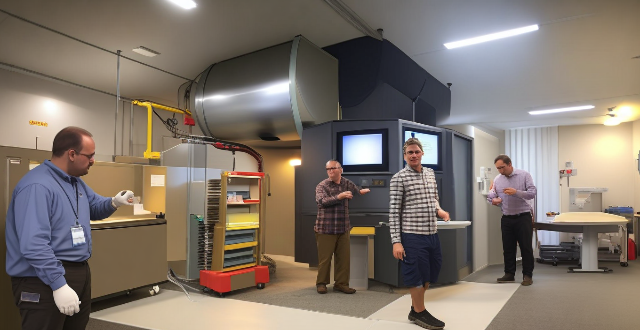
Can you explain the difference between biosafety levels 1-4 ?
Biosafety Levels (BSL) are guidelines for handling hazardous biological agents, with four levels of increasing risk and safety measures. BSL-1 is for non-pathogenic organisms, BSL-2 for moderate risk agents, BSL-3 for serious disease-causing agents, and BSL-4 for highly dangerous agents like Ebola. Differences include lab design, access control, safety equipment, and procedures to protect personnel and the environment.

How do biosafety policies address the risk of accidental or intentional release of harmful biological agents ?
Biosafety policies are comprehensive measures designed to manage the risks associated with accidental or intentional releases of harmful biological agents. These include: 1. **Biosafety Levels**: Four tiers of guidelines for handling different risk groups of microorganisms, each with specific facility, equipment, and training requirements. 2. **Laboratory Procedures**: Strict adherence to safety procedures using engineering controls, personal protective equipment, standard microbiological practices, and waste management protocols. 3. **Regulations and Compliance**: Government laws and regulations ensuring safe handling through transportation guidelines, facility registration, reporting requirements, and oversight by agencies like the CDC. 4. **Training and Education**: Regular sessions on biosafety practices, emergency response, and continuous learning to keep personnel updated. 5. **Incident Response Plans**: Preparedness for incidents through emergency response teams, decontamination procedures, medical treatment, and communication strategies. By addressing these aspects diligently, biosafety policies aim to minimize the risk of accidental or intentional release of harmful biological agents.
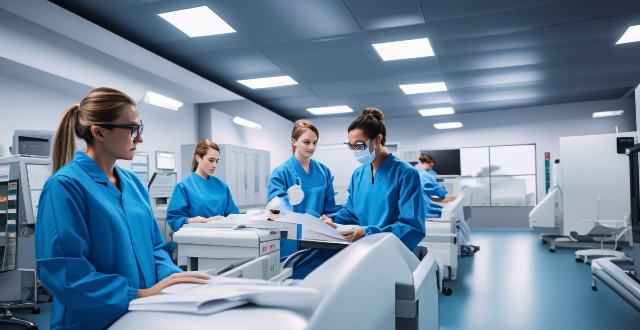
How can biosafety be improved in healthcare facilities ?
Improving biosafety in healthcare facilities involves implementing clear policies, using advanced technology, and creating a culture of safety. Specific strategies include developing SOPs, regular training, designated biohazard areas, infection control measures, surveillance, waste management, emergency response planning, encouraging reporting, leadership support, and staying updated with scientific advancements.
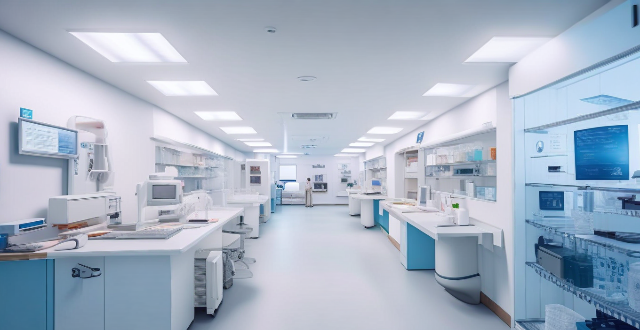
What are the key components of an effective biosafety policy ?
An effective biosafety policy is crucial for any organization that handles biological materials. It ensures the safety of personnel, the environment, and the public by minimizing risks associated with biological agents. Key components of an effective biosafety policy include: introduction, responsibilities, hazard identification and risk assessment, biosafety levels, engineering controls, administrative controls, personal protective equipment (PPE), waste management, incident response plan, and review and updates. Incorporating these key components into your biosafety policy can create a comprehensive framework that ensures the safe handling of biological materials and protects the health and safety of your employees and the environment.

What role do personal protective equipment (PPE) play in maintaining biosafety ?
PPE is vital for maintaining biosafety by preventing exposure to harmful biological agents, reducing contamination, complying with regulations, and promoting safety awareness. Types of PPE include physical barriers like gloves and gowns, eye and face protection, respiratory protection, and head protection. Best practices involve ensuring proper fit, following correct donning and doffing procedures, replacing damaged or contaminated PPE, storing it properly, and regularly inspecting it for wear or damage.

Can exercise reverse heart disease ?
Heart disease is a major cause of death worldwide, and it can be devastating to those affected. While there are many treatments available for heart disease, including medication and surgery, some people wonder if exercise can reverse the damage caused by heart disease. There is evidence that regular exercise can help prevent and manage heart disease by improving cardiovascular health, managing weight, lowering blood pressure, improving cholesterol levels, and reducing stress. However, there is no conclusive evidence that exercise can completely reverse heart disease. Despite this, there are still many benefits to regular exercise for heart health. If you have been diagnosed with heart disease or are at high risk for developing it, talk to your doctor about starting an exercise program. They can help you create an exercise plan that is safe and effective for your individual needs and goals.

What are the potential risks associated with biosafety breaches ?
Biosafety breaches pose significant risks to human health, the environment, and biodiversity. These risks include infection through direct exposure or aerosol transmission, toxicity from microorganism-produced toxins, allergies, ecosystem disruption, biodiversity loss, genetic exchange, agricultural impacts, trade and travel restrictions, public fear, liability and compensation issues, and ethical concerns regarding genetically modified organisms. Facilities handling hazardous biological materials must implement strict safety measures to prevent these incidents.

How can biosafety be maintained during transportation of biological materials ?
Transporting biological materials requires adherence to biosafety protocols, including compliance with regulations, proper packaging, temperature control, security measures, training of personnel, incident response planning, and waste management. Following these guidelines ensures the safety of all parties involved and prevents contamination or harm to individuals and the environment.
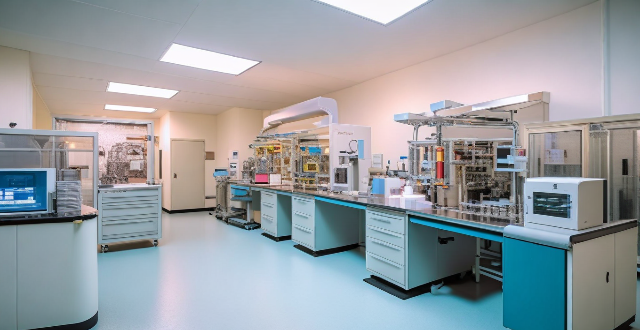
What measures should be taken to ensure compliance with biosafety policies in laboratories and research facilities ?
Ensuring biosafety compliance in laboratories and research facilities is crucial for the protection of personnel, the environment, and research subjects. Measures such as regular training sessions, competency assessments, clear policies and procedures, proper use of personal protective equipment (PPE), effective waste management, and well-developed emergency response plans should be implemented to create a safe working environment.

How do vaccines work to protect against disease ?
Vaccines protect against disease by introducing a small amount of the pathogen into the body, triggering the immune system to produce antibodies that protect against future infections with the same pathogen. There are several types of vaccines with unique mechanisms of action and effectiveness against specific pathogens. The development of vaccines is a complex process requiring extensive testing and research, but they have been shown to be highly effective at preventing serious diseases.

What are some good gluten-free food options for people with celiac disease ?
Celiac disease is an autoimmune disorder that damages the small intestine and requires a strict gluten-free diet. Good gluten-free food options for people with celiac disease include fruits and vegetables, meat and fish, gluten-free grains and starches like quinoa and brown rice, dairy products, nuts and seeds, gluten-free flours and baking mixes, and gluten-free snacks and beverages like popcorn and juices.

How does climate change influence the distribution and survival of disease-carrying organisms ?
This text discusses the influence of climate change on the distribution and survival of disease-carrying organisms, highlighting how altered habitats, changes in reproduction and life cycle, and altered behavior and transmission rates contribute to the spread of diseases. It further provides examples of specific disease-carrying organisms affected by climate change and suggests mitigation strategies such as surveillance, control measures, public health education, and research to address these challenges.

How does predictive analytics help in disease prevention and management within the healthcare system ?
Predictive analytics in healthcare can significantly improve disease prevention and management by identifying patterns and trends in patient data. It offers benefits such as early intervention, personalized treatment plans, enhanced operational efficiency, and informed decision-making. Applications include disease surveillance, chronic disease management, and patient care optimization. However, challenges like data privacy, quality, and the need for skilled data analysts must be addressed to fully realize its potential.

Does high-intensity interval training (HIIT) have specific benefits for chronic disease prevention ?
High-intensity interval training (HIIT) offers numerous benefits for chronic disease prevention, including improved cardiovascular health, enhanced glucose control, reduced inflammation, increased muscle mass and strength, and improved mental health outcomes. To incorporate HIIT into a healthy lifestyle, start slowly, choose the right exercises, include other forms of exercise, and consult with a health professional.

How much exercise is needed per week to prevent chronic disease ?
Chronic diseases are a major cause of death and disability worldwide. Regular physical activity can help reduce the risk of developing chronic diseases such as heart disease, diabetes, and some types of cancer. According to the World Health Organization (WHO), adults should aim to do at least 150 minutes of moderate-intensity aerobic exercise or 75 minutes of vigorous-intensity aerobic exercise each week, along with muscle-strengthening activities at least twice a week. However, the amount of exercise needed to prevent chronic diseases may vary depending on individual factors such as age, sex, body weight, and overall health status. It's recommended that people try to incorporate at least 30 minutes of moderate-intensity aerobic exercise into their daily routine, along with strength training exercises whenever possible.
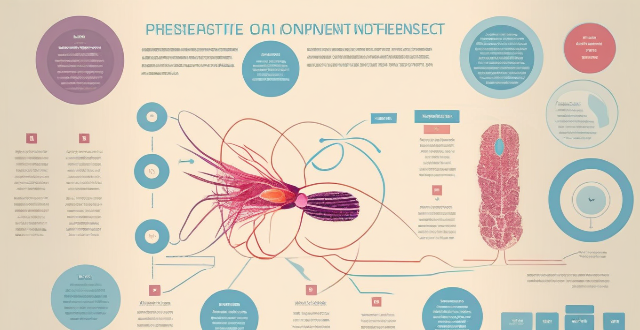
How does consistent physical activity affect the immune system in relation to chronic disease prevention ?
The article discusses the impact of consistent physical activity on the immune system and its role in preventing chronic diseases. It explains that regular exercise can increase the number and activity of immune cells, reduce inflammation, and improve overall health. The article also provides recommendations for exercise and emphasizes the importance of incorporating physical activity into one's lifestyle to prevent chronic diseases and improve well-being.